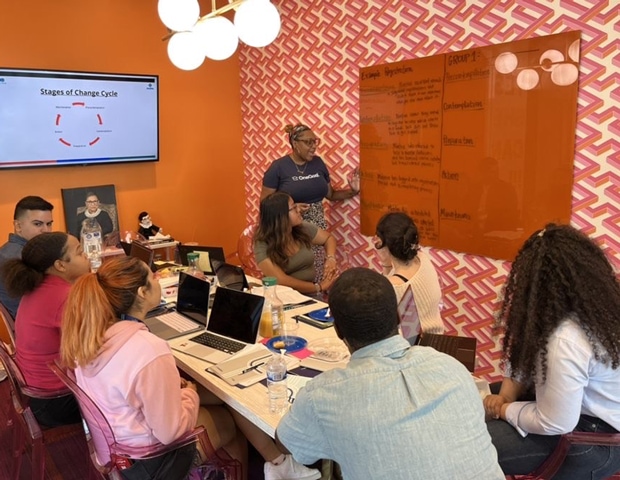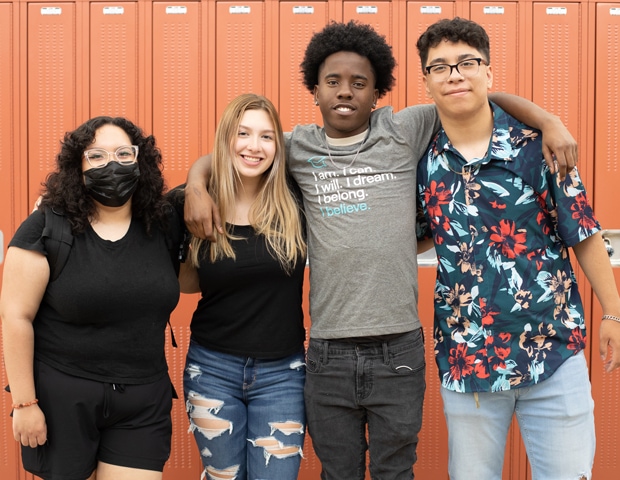Delve into the complexities of the achievement gap, strategies to bridge it, and the profound importance of preparing students for their future path with the right skills and knowledge.
First-Generation College Student – Unique Barriers
By Monica Selagea
November 22, 2023
Explore the unique challenges faced by first-generation college students and the importance of dismantling barriers to provide equal opportunities for academic success and career achievement. Learn from personal experiences and insights that shed light on the injustices these students navigate and the broader impact on educational equity.
I defeated the inevitable barriers that are attached to being a first-generation college graduate. Oddly enough, I did not have a college readiness program when I attended high school; I don’t even remember my counselor’s name. Now that I am a teacher/counselor, I bring these personal experiences into my work with my students.
Ultimately, every student is different, and each faces a multitude of barriers, but for first-generation students, those who are the first in their families to pursue higher education, there are unique barriers one must overcome. Entering the realm of postsecondary education is a significant milestone in one’s academic journey. So, how can we, as educators, help students overcome these barriers?
In this blog post, we will explore the barriers that first-generation students often encounter. We’ll also shed light on the importance of addressing these obstacles to promote inclusivity and support students’ educational aspirations.

Lack of Familiarity, Support, & Guidance
Usually, a first-generation student cannot rely on family support—not because the family doesn’t support education, but because the family does not understand the importance or the process of postsecondary paths. College is not fundamental in the home because it’s a new venture, so the idea of college is more a topic of conversation than an expectation. College isn’t even a realistic option in some homes because it is not prioritized as a necessity to survive or thrive. According to a report by the Pell Institute, only 27% of first-generation students receive assistance from their parents in completing financial aid forms, compared to 57% of students with college-educated parents. And that is only one part of the college application process. However, if parents do support the student’s desire to attend higher education, they must count on the student to learn about the process. And it’s the work of the student to find a crack in the barrier by relying on schools, educators, counselors, and programs to learn about the college application and financial aid process.
However, some high schools do not have a strong college readiness program because they lack counselors, funds, or resources. The existence of counselors does not always mean that there is a strong program. The National Center for Education Statistics reports that in 2020, 72% of first-generation students had taken no college preparatory courses in high school, compared to 43% of students whose parents attended at least some college. This limits the possibilities for higher education for all students, especially first-gen students. If the student does not have support at home and the school does not establish a culture for higher learning, who can the student lean on? These two problems go hand in hand because students whose parents do not have a bachelor’s degree are usually the students who attend schools that are low funded with inadequate resources. As a result, first-generation students require additional support and resources to bridge the gaps in their knowledge and skills.

Cultural & Social Adjustment
There are multiple adjustments first-gen students must make in order to be successful at a competitive school. A large campus or long distance between home and school can make a student feel isolated. They may feel disconnected from their classmates and struggle to adapt to the social and cultural aspects of college life. According to a survey by the Center for First-Generation Student Success, 43% of first-generation students reported feeling like they didn’t fit in, compared to 27% of their peers with college-educated parents.
The differences in culture can also impact a student’s sense of belonging. In my experience as a teacher, a plethora of students struggle in their first year in college. It’s especially difficult for first-gen students because it comes with a sense of guilt. While their parents are struggling to make ends meet, the student is away for educational purposes. This is a mental struggle whether the parents support the student or not. The lack of exposure makes it difficult for students to assimilate into the culture of college life, and it impacts a student’s success. As a result, it can drive the student to withdraw and come home after their first year.

Unique Barriers
The aforementioned barriers apply to many students, whether they are first generation or not. But first-generation students have unique barriers because the majority come from marginalized groups.
Race: One cannot pick their race when they are born—this is a fundamental characteristic. More than half of first-gen students identify as nonwhite.
Sex: Female students outnumber male students across the country’s overall population of college enrollees.
Immigrants: Many first-generation college students are also first-generation Americans or their parents are foreign born.
Low Income: First-generation college students disproportionately come from lower-income backgrounds. This in turn means they live in a low-income area and attend low funded schools.
There are articles about student barriers that include statistics, data, and facts, but the way to understand and help a student is to hear their experience firsthand. As a Latina affected by all of the above barriers, attaining a degree was challenging, but it gave me the ambition to finish.

How to Help
As educators, here are some things we can do to support first-generation students: schools should have college readiness programs like OneGoal, senior seminars, and other programs/classes that guide students in understanding postsecondary paths. Counselors are vital to the college application process and should establish a culture for higher learning by creating spaces that celebrate college attainment. Also, taking college tours and introducing students to a network of people who work in educational institutions can be helpful. All educators should be role models for students by sharing their college experiences and offering advice. Schools can have alumni events so students can hear firsthand experiences from their peers who have graduated. Schools should offer family nights throughout the year to teach families about the college application process so they can better support their student’s educational investment.
Breaking Barriers for First-Gen Students
It is crucial to recognize the barriers that exist for first-generation students. By dismantling these barriers, we can ensure that these students have equal opportunities to excel academically and embark on successful careers. For me, college was not easy to attend or complete. I didn’t think that those were barriers. I just assumed that the challenge was the same for everyone because I was told that college was expensive. I was told that it would be rigorous and time consuming. But it never discouraged me from trying. Since my peers were similar to me culturally and socially, I just assumed those barriers were the norm, which was why having a college degree was so grand and considered a success story. As I grew older and started teaching, I realized that those barriers were and continue to be an injustice.
Monica Selagea grew up in Chicago and attended Columbia College in Chicago and DePaul University. She is currently a high school teacher in Chicago and a Program Director for OneGoal. She also teaches at the City Colleges of Chicago.

Related Stories
Each summer, 10% to 40% of high school students intend to enroll in college the fall after graduation but never actually do so. In recent years, this phenomenon has been known as “summer melt.”
Establishing an equitable education environment is vital to helping students achieve their goals, but how can teachers and schools put this value into action?





